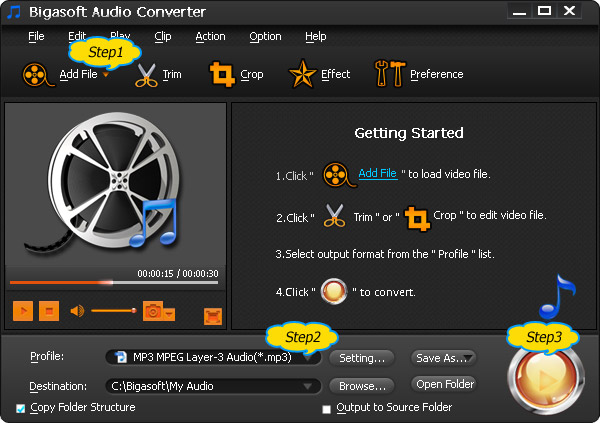
:max_bytes(150000):strip_icc()/convert-itunes-songs-to-mp3-2000442-adf86430b1054d818314422b4d5cb69e.png)
The Windows operating system will treat the virtual drive just like a real one, so you can tell your CD burning software to access the virtual drive by it's own drive letter. A "virtual CD drive" such as NoteBurner or CD Emulator can simulate a real CD burner, eliminating the need for real CD-R discs. Method 2: If you have lots of music, you might need a big pile of CDs to convert everything with the "burn and rip" method above. (Note that you must burn an audio CD, not a data CD.) You can delete the AAC version if you like. Again, be aware that you'll have TWO copies of that song in iTunes - one in the original AAC format and one in MP3 format. Method 1: Burn the track(s) to a CD, then you can open the CD in iTunes and the Create MP3 Version or Convert Selection to MP3 option will do exactly what you want. Unless.įortunately, there are ways to get around this annoying restriction. if you try to convert a track and iTunes tells you that "Protected files cannot be converted to other formats", then the song is DRM-protected and CANNOT be converted to MP3 format. The "Kind" column will say "Purchased AAC audio file" (iTunes format) or "MPEG audio file" (MP3 format). Right-click in the column header area, and you can turn columns on and off. If you click on File / Display Duplicates, then turn on the column labelled "Kind" you'll be able to quickly see which songs exist in both formats. They'll look identical in the iTunes library, but you can right-click and select "Get Info" to tell them apart.

The only downside is that now you have TWO copies of that song - one in the AAC format, and one in MP3 format. if your music was recently purchased, iTunes will happily convert the file to MP3. Now when you right-click on a music track, there is an option to Create MP3 Version or Convert Selection to MP3. Your goal is to change the Import Using from the default setting to "MP3 Encoder". In older versions of iTunes, click on Edit / Preferences / Importing (or Edit / Preferences / Advanced / Importing). In iTunes 8 or later versions, go to Edit / Preferences / General and click the Import Settings button. You'll need to change your import settings to get iTunes to import the track as MP3. Probably it says "Create AAC Version" or "Convert Selection to AAC", which is useless because your iTunes tracks are already in AAC format! If you right-click on a music track in iTunes, there is an option to Convert Selection or Create Version in some other format. Hence, the need to convert iTunes music to the MP3 format. Understandably, this makes owners of non-iPod music players (as well as Linux users) a little upset.
PROGRAM TO CONVERT ITUNES TO MP3 FREE PORTABLE
You CAN copy them to your portable music player, as long as you bought that player from Apple and it says iPod on it. iTunes music tracks are proprietary and cannot be played on a computer which does not have the iTunes software. But Apple's iTunes software doesn't give you MP3 files when you buy a song. You can burn MP3s to a CD and they'll play just fine on almost any modern CD player.

An MP3 music track can be played on almost ANY player, whether it's portable or computer-based. But DRM often restricts the consumer from doing perfectly valid and reasonable things with music they own, like making a backup copy, burning a CD, or converting to another audio format. DRM (Digital Rights Management) was created by the entertainment industry so they could control the duplication and dissemination of their content. Prior to April 2009, the iTunes tracks that you purchased were in a "DRM protected" AAC audio format.

MP3 has been an open standard for many years, but it's not always simple to convert iTunes music tracks to MP3 format. you paid for those songs and now you can't play them outside of the iTunes environment, on hardware not supported by Apple, or on operating systems not supported by iTunes.


 0 kommentar(er)
0 kommentar(er)
